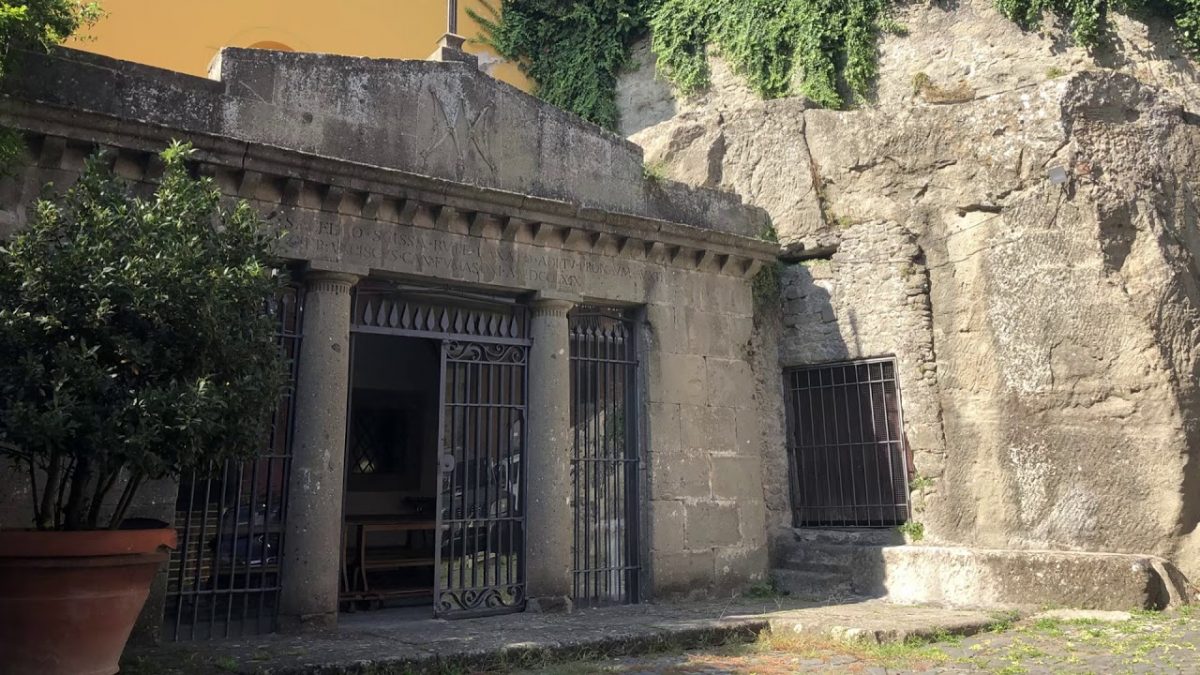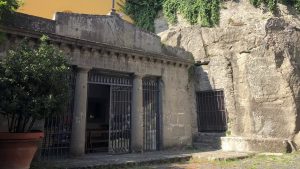The entrance is distinctly separated by two Tuscan columns, which support a pronounced moulded architrave, held up by consoles, extending along the entire façade. The entrance gate dating back to the 18th century has an architrave and moulded doorjambs.
Inside, the Santuario della Madonna dell’Acquasanta (Sanctuary of the Madonna of the Holy Water) has a simple structure with one nave originating from the work carried out between 1693 and 1720. The Rococo altar, dating back to 1759, is made from a stone block on which a carved frame surrounds the fresco of the Madonna with child in arms and a dish of water in her left hand. The fresco shows several phases of painting among which the most ancient dates back to between the 6th and 9th century AD.
The image of the Madonna, probably carried out between the 4th and 9th century, was originally found in an ordinary aedicule. According to the people of Marino the Madonna of the Holy Water is related to miraculous events. Tradition has it that a man on horseback riding along Via Maremmana Inferiore towards Castel Gandolfo and Albano Laziale, lost control of his horse and would have died had it not been for the Virgin Mary. As of that day, the Virgin Mary has been associated to several miracles.
It is likely that in the 16th century the aedicule was incorporated inside the first nucleus of the Sanctuary.
The side altar of the Santissimo Crocifisso (Most Holy Crucifix), financed by the priests Giovanni Andrea and Nicola Fico in 1788, was later used by the Secular Franciscan Order as shown by the emblem on the actual altar. The same priests also financed the completion of the church tower with a further two floors.


 Visit Castelli Romani
Visit Castelli Romani 


